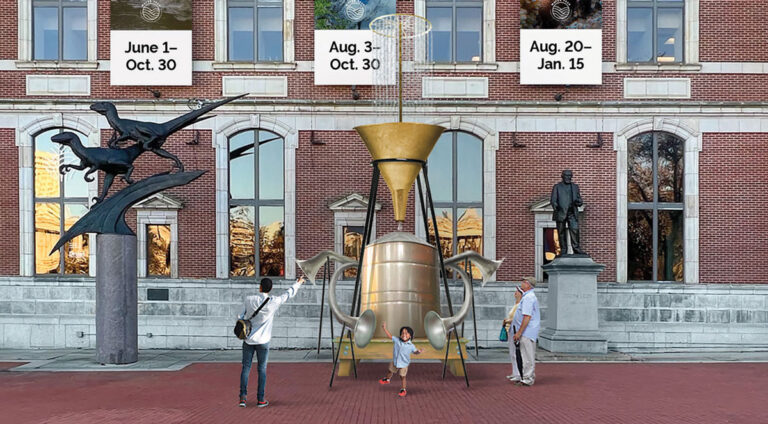Water is having far more than a moment at the Academy of Natural Sciences of Drexel University, which has designated 2022 as Water Year. Celebrations of this essential element have taken many forms throughout the summer and fall, including a series of exhibits and artistic installations supported by the Pew Center for Arts & Heritage.
Four separate but overlapping installations were on exhibit for “Watershed Moment” through Oct. 30, created by artists responding to watershed science and a desire to protect water as it traverses the urban landscape. The installations were designed to be experienced individually or together, in any order.
“The River Feeds Back,” an immersive sound installation in the Academy’s Dietrich Gallery, was created by artists Annea Lockwood and Liz Phillips. The artists created a layered sound map featuring recordings taken along 135 miles of the Schuylkill River from its headwaters to its mouth. Listening portals made of wood, slate and clay pottery enabled participants to hear swirling currents, the underwater antics of insects and fish, as well as the distinctive calls of birds, frogs and toads.
The artists also produced this auditory magic in an outdoor companion exhibit called “Inside the Watershed.” Inside a specially designed arbor located on the Schuykill River Trail, visitors eavesdropped on live sound from an underwater microphone that revealed life hidden from view. Every half hour, five-minute recordings made underwater at the Black Rock Sanctuary near Phoenixville mixed with live sound from the river.
“How to Get to the River” offered participants an urban watershed adventure they could follow from the Academy down Cherry Street and back through a micro-watershed of the Schuylkill River. Developed by New Paradise Laboratories founder Whit MacLaughlin and collaborators Laia and Pete Angevine, the installation provided visual cues, trail blazes, embedded sound experiences and unexpected moments that elevate the urban watershed into a work of art.
Finally, “Attunement” was erected in front of the Academy on the Benjamin Franklin Parkway, based on designs by David Gordon in collaboration with New Paradise Laboratories and fabricated by Jordan Griska. Made from recycled materials, naturally amplified and inspired by the traditional Japanese ornament and musical instrument known as suikinkutsu, the public sculpture portrayed droplets of water forming larger geophysical structures.


